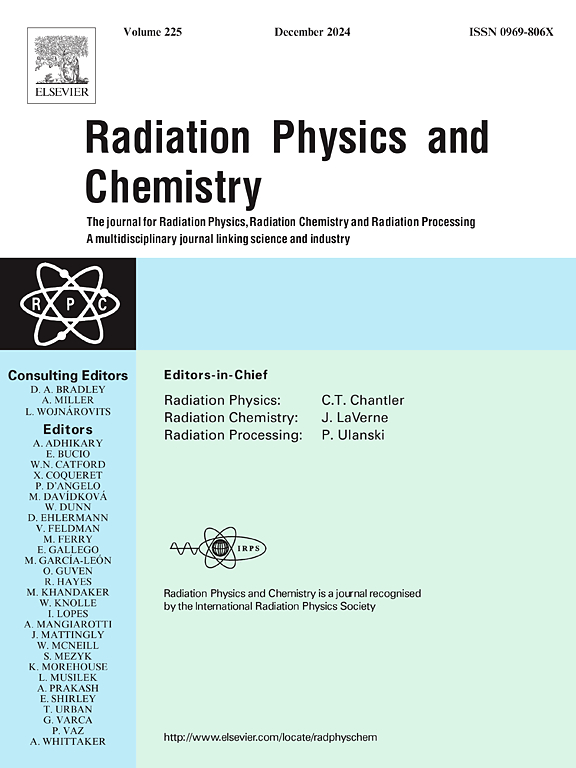Raman measurements on gamma irradiated chestnut fruits
IF 2.8
3区 物理与天体物理
Q3 CHEMISTRY, PHYSICAL
引用次数: 0
Abstract
Irradiation for food preservation is on use in several countries for different types of foods: fish, meat, vegetables, etc., with its application accepted and regulated by national and international food safety agencies. In this work an irradiation preservation process was applied on chestnut fruits, studying its impact on fruit characteristics. Here, we applied Raman scattering measurements on two varieties of non-irradiated and irradiated chestnut fruits at different irradiation doses (1, 2 and 5 kGy), to identify the main peaks associated with main molecular structures present on chestnut fruits and their behavior (intensity, peak position and full width at half maximum-FWHM) with irradiated doses. The intensity ratios of relevant peaks were used to correlate the obtained results with the dose and/or variety. With the focus of this research centered not only on structural changes after processing but also on the possibility to use this tool to easily distinguish between varieties and/or processed fruits by irradiation. From the results presented in this study, following the appropriate Raman peaks, it was possible to clearly identify the chestnut fruits varieties and also to discriminate irradiated from non-irradiated samples.
From our knowledge, this is the first time that Raman scattering measurements were performed on chestnut fruits submitted to an irradiation preservation process.
求助全文
约1分钟内获得全文
求助全文
来源期刊

Radiation Physics and Chemistry
化学-核科学技术
CiteScore
5.60
自引率
17.20%
发文量
574
审稿时长
12 weeks
期刊介绍:
Radiation Physics and Chemistry is a multidisciplinary journal that provides a medium for publication of substantial and original papers, reviews, and short communications which focus on research and developments involving ionizing radiation in radiation physics, radiation chemistry and radiation processing.
The journal aims to publish papers with significance to an international audience, containing substantial novelty and scientific impact. The Editors reserve the rights to reject, with or without external review, papers that do not meet these criteria. This could include papers that are very similar to previous publications, only with changed target substrates, employed materials, analyzed sites and experimental methods, report results without presenting new insights and/or hypothesis testing, or do not focus on the radiation effects.
 求助内容:
求助内容: 应助结果提醒方式:
应助结果提醒方式:


